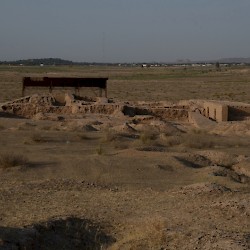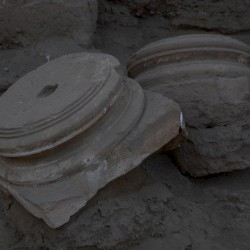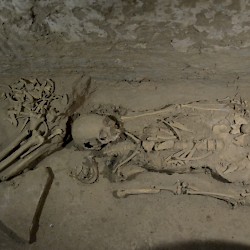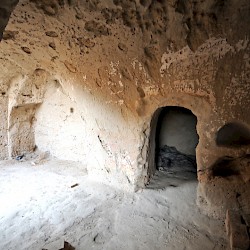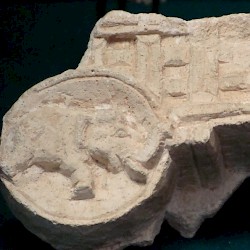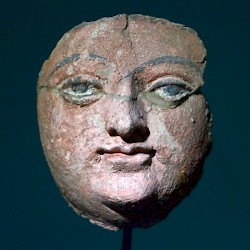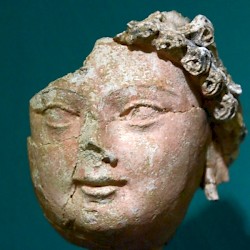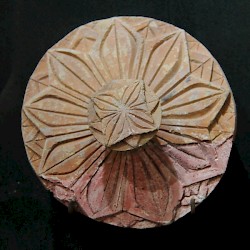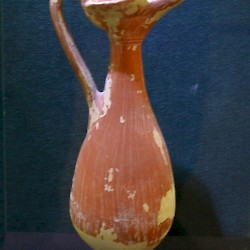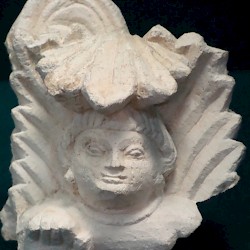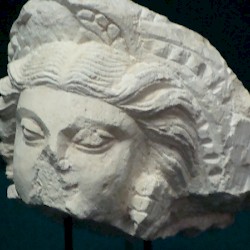Kara Tepe
Q4213429Kara Tepe: ancient Buddhist monastery near modern Termez (southern Uzbekistan).
Early Bactria
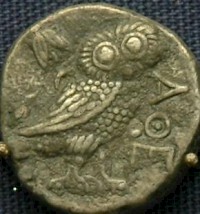
Since the early Achaemenid age, Bactria (the plain of the Upper Oxus) was used to settle Greek deportees. They must have kept their Greek identity, because they were recognized when Alexander the Great arrived in 329 BCE. To pacify the region, he resettled the native population of pastoralists and farmers in newly founded cities (e.g., Ai Khanum in modern Afghanistan and Kampyr Tepe in Uzbekistan) and made them serfs of the thousands of Greek mercenaries whom he ordered to remain in Bactria as an occupying force.
After Alexander's death (323 BCE), Bactria became part of the Seleucid Empire, but after the mid-third century, an independent Graeco-Bactrian kingdom was created. Under its king Demetrius (r.c.184-c-170), it expanded towards Gandara (the valley of the river Kabul) and the eastern Punjab, while in Bactria itself, new cities were built, like Termez (which may originally have been called Demetria)
Kushan Bactria
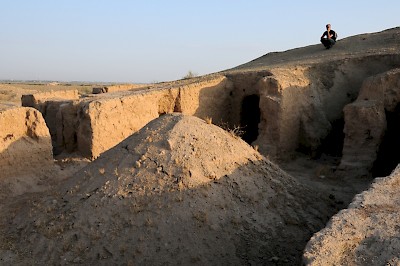
However, the Graeco-Bactrians lost Bactria in the third quarter of the second century BCE. The area was taken over by the nomads with whom the Graeco-Bactrians had always lived together (Sacae and Yuezhi).
After the initial shock, a new political unit was created, which is named after the Yuezhi nomads: the Kushans. This new state had a quite syncretistic nature and incorporated Graeco-Bactrian, Iranian, and nomadic elements. Having created some stability in Bactria, the Kushan Empire expanded to Gandara and the Punjab as well. Peshawar became the new capital.
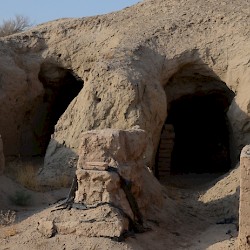 Kara Tepe, South, Two caves |
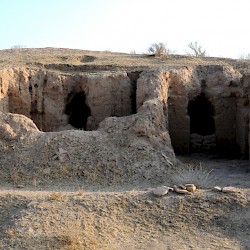 Kara Tepe, West, Caves |
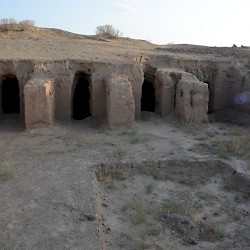 Kara Tepe, West, Court with cells |
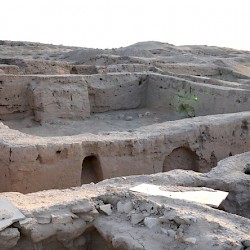 Kara Tepe, North, Court |
Kara Tepe
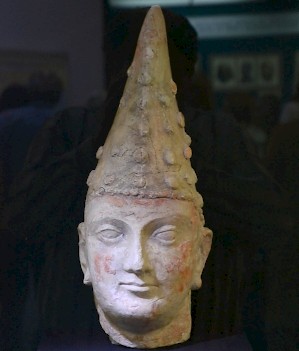
Buddhism benefited from the fact that the Punjab and Bactria were united under one king: this religion spread from the south to the north, and from the valley of the Oxus along the Silk Road to China and, eventually, Japan.
There were many Buddhist monastic settlements in Kushan Bactria: Kara Tepe and Fayaz Tepe, which are within sight of each other, are just two of the monasteries surrounding Termez. Fayaz Tepe is the older and more monumental of the two: it is essentially a very big stupa from the first century CE with a monastery next to it, while Kara Tepe consists of three groups of monks' cells and several small stupas.
The three parts of Kara Tepe are called south, west, and north. The southern part consists of man-made caves and some modest architectural remains of mudbrick: the cells of the monks. The only decoration is painted plaster on some of the walls. The western part offers the same, but there is a court and a stupa too. The northern sector consists of a great court and several stupas. There are no cave dwellings for the monks. The courts of the western and northern settlements were surrounded with Greek-style columns.

Kara Tepe, founded in the early second century CE, flourished in the late second and early third century. In the fourth century, a part of the monastery had been abandoned, the cells being used to bury people. The stupas, however, were still venerated in the sixth century. It is unclear whether the monastery was still functioning when the Arabs invaded Bactria.
The Kara Tepe monastery may have been reused in the ninth and tenth centuries by Islamic mystics (sufis). Today, it is in the military zone between Uzbekistan and Afghanistan. Access, however, is possible.
